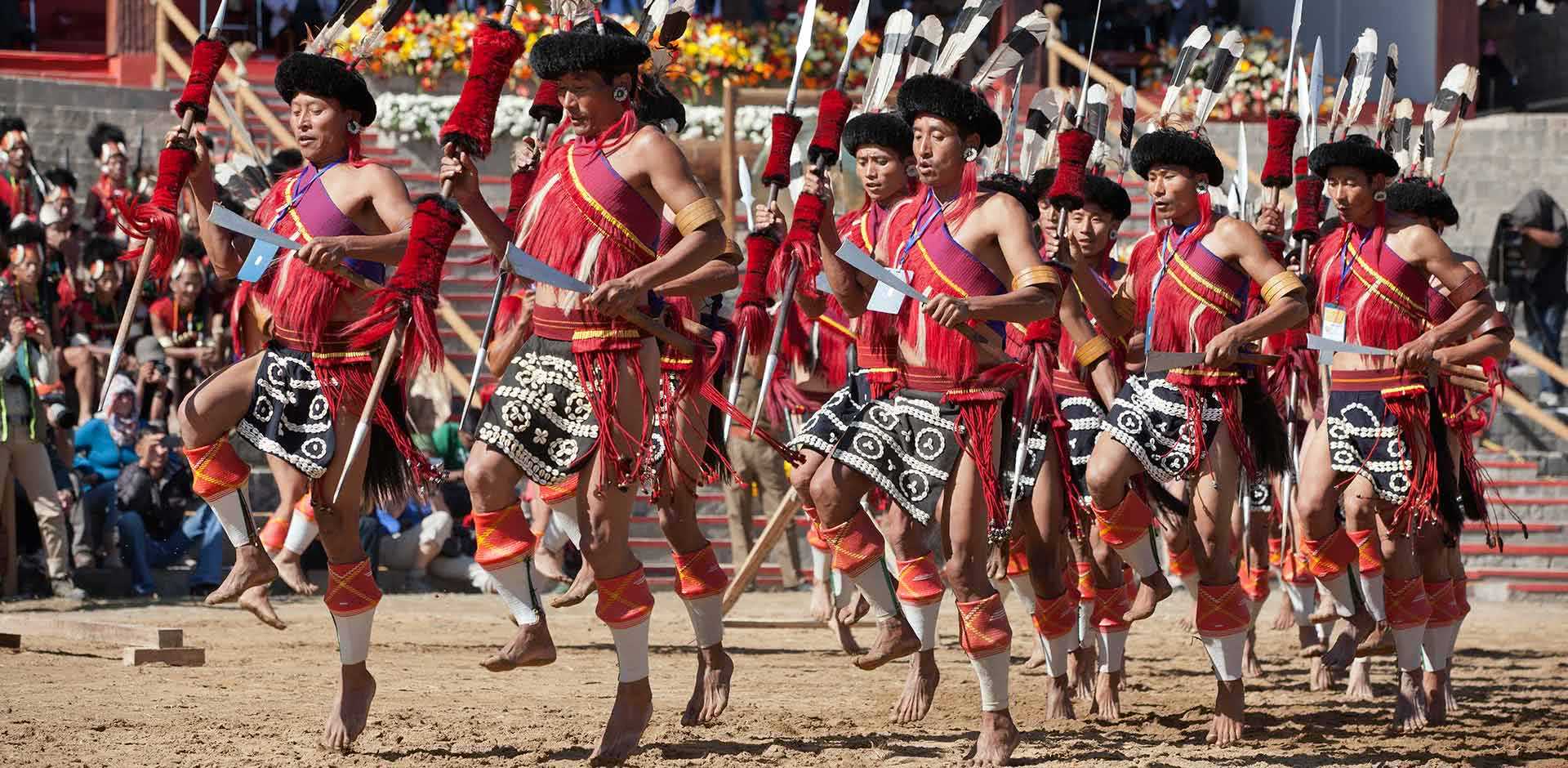Nagaland
Experiences
A handpicked selection of experiences endorsed by our experts. If you can’t see what you’re looking for, let us know, as our extensive network of local contacts can open many doors.
Dzukou Valley
Filled with streams and fields of vividly colored wildflowers, the scenic Dzukou Valley lies 20 miles (32 kilometers) south of Kohima. At 8,202 feet (2,500 meters) above sea level, the valley is a cool, breezy location far-removed from the heat and dust of lowland India. The ideal time to visit is from June to September, when the various flowers, including lilies and rhododendrons, are in full bloom, blanketing the hillsides with bursts of color.
Hornbill Festival
Held in the state capital of Kohima, the Hornbill Festival is a traditional rite of passage in which Naga elders impart their accumulated wisdom to the tribes' youth. In addition, traditional arts, wood-carving and sculptures are exhibited, and visitors and Naga alike attend performances of folk songs, traditional dances and participate in a variety of sports and games.
Naga Festivals
One of the richest parts of Naga culture are the tribes' annual festivals. Roughly two-thirds of Naga people practice subsistence agriculture, and feasts and festivals revolve around their harvests. Each tribe's festival has distinct elements; popular festivals include Yemshe, held by the Pochuri tribe around October, and Tokhu Emong, the festival of the Lotha people, usually around November.
Naga Tribespeople
Meet the Naga tribes, of which 16 reside within the borders of Nagaland. Spend a night at a Naga village, and learn about their traditions and customs (one of which was headhunting, now outlawed). Many of the Naga today are Christian due to the influence of missionaries.
Nature Walk
Go on a guided hike through seemingly endless forests of mahogany, punctuated by high grasses and scrubs, and inhabited by elephants, monkeys, leopards, bears, and buffalo. Lucky visitors might glimpse the Great Indian Hornbill, a threatened, fruit-eating bird with a large, concave beak that resembles a toucan.
War Cemetery
During World War II, Nagaland was the site of the Battle of Kohima, a turning point in the Southeast Asia theater of World War II, as the British were able to repel the Japanese forces. The War Cemetery was built on the site of the fiercest fighting, which lasted 64 days and resulted in almost 4,000 Allied and over 5,000 Japanese casualties.
India Regions
Explore in-depth information, experiences and highlights by navigating to specific regions using the links below.
Northern
Southern
North-Eastern
Rajasthan
Wildlife Parks
Western
Andaman & Nicobar Islands
Central
Multi-Country Specialists
India Goes Well With

Exclusively Asia
With Remote Lands you'll travel with people who have made Asia the solitary focus of their own lifelong adventure. As our guest, you'll discover Asia on a journey that is completely, authentically your own, adapted from our own remarkable experiences and adventures over the years.
Travelogues
An Asia-focused magazine brought to you by Remote Lands - a platform for adventure, luxury, and authenticity from experts and explorers around the continent.
ESSENTIAL INDIA: Gateway to Asia’s Most Dynamic Nation with Remote Lands
- Author
- Travelogues
India Unexplored: Peace in Shimla
- Author
- Travelogues
Watching Cricket in India for Travelers
- Author
- Christian Gibney
What Others Say
Here is a small selection of the kind words our clients have said about us recently.

Solo Traveler from US Virgin Islands
The trip was all I expected and more. Plans were flawless--as I would expect from Remote Lands.

Peter, Litchfield, CT
Remote Lands arranged an absolutely flawless trip for me to Delhi, Agra and Rajasthan where I stayed in some of the world's finest hotels.













